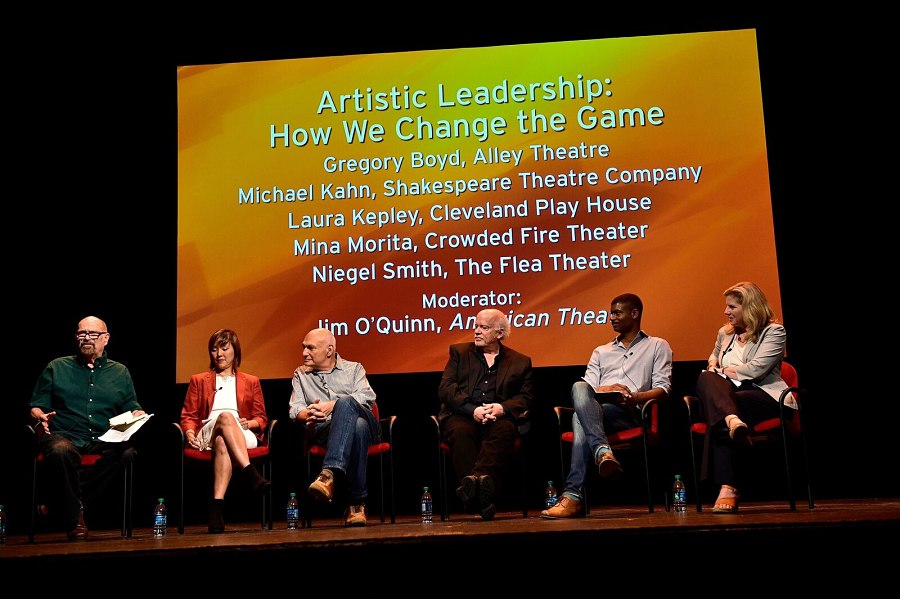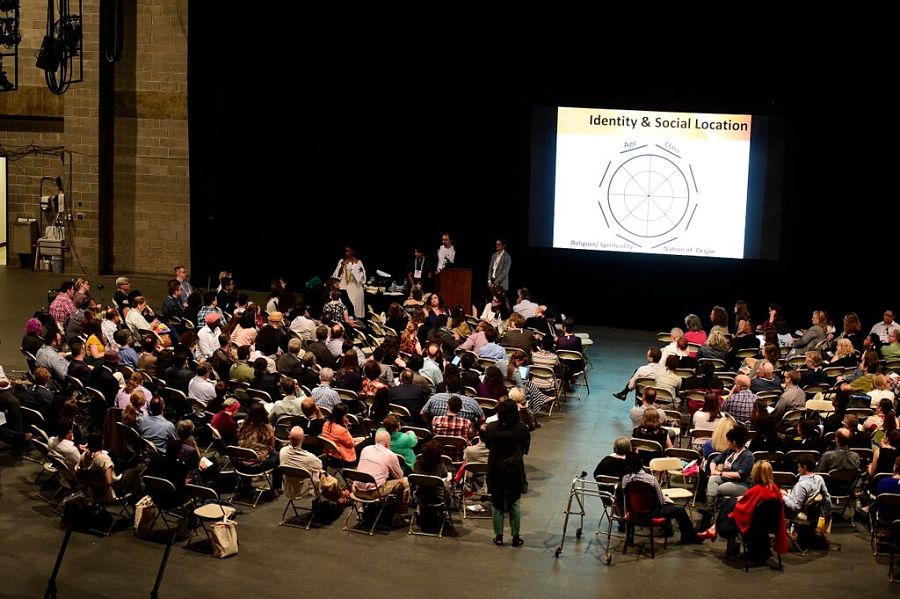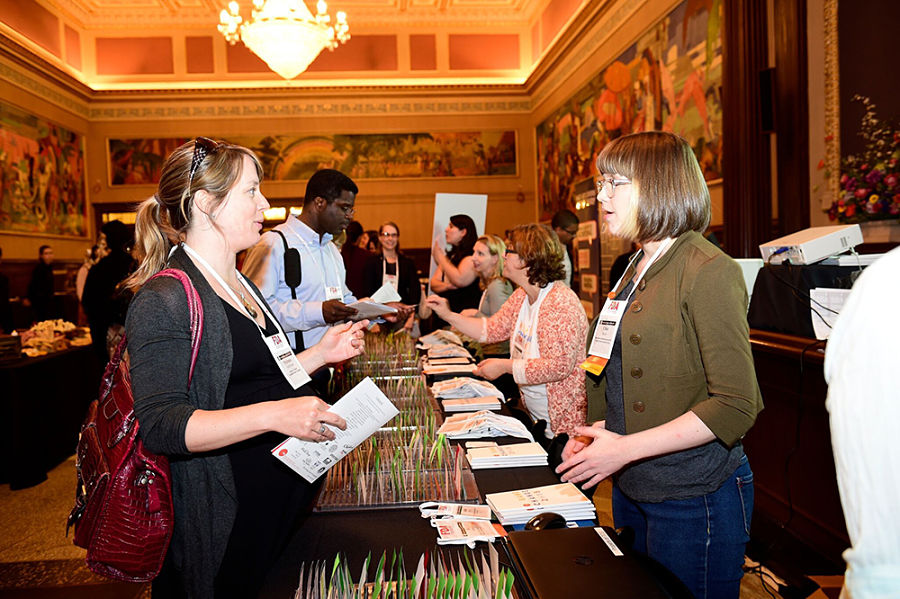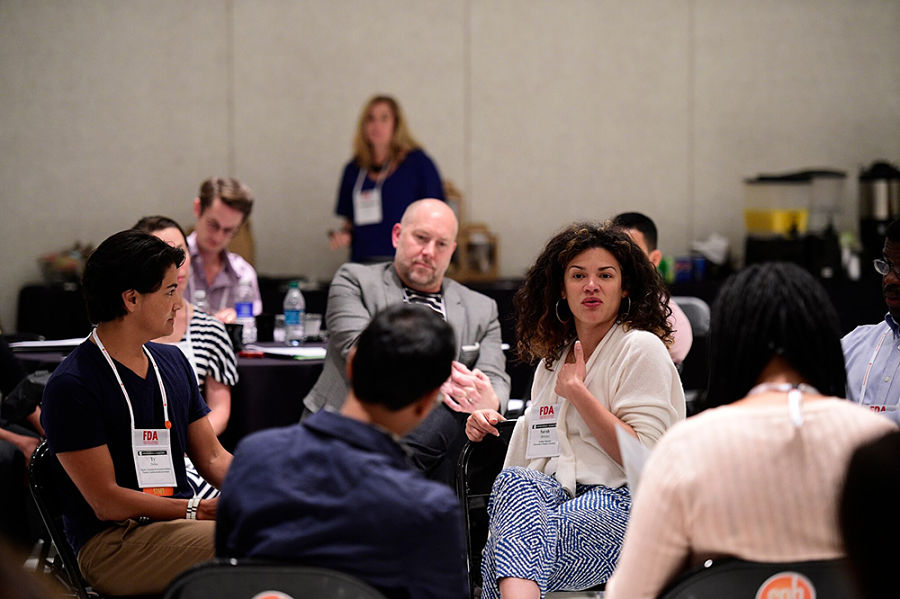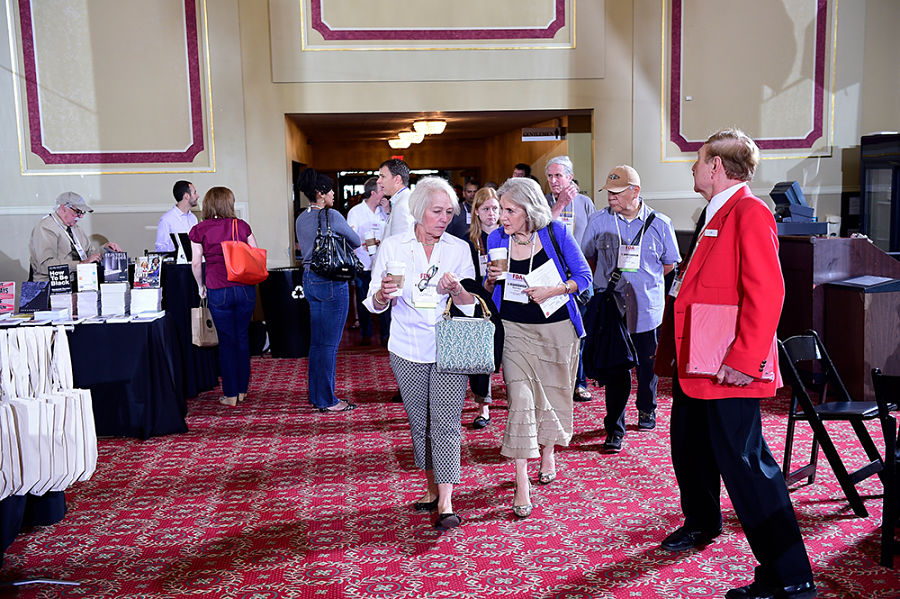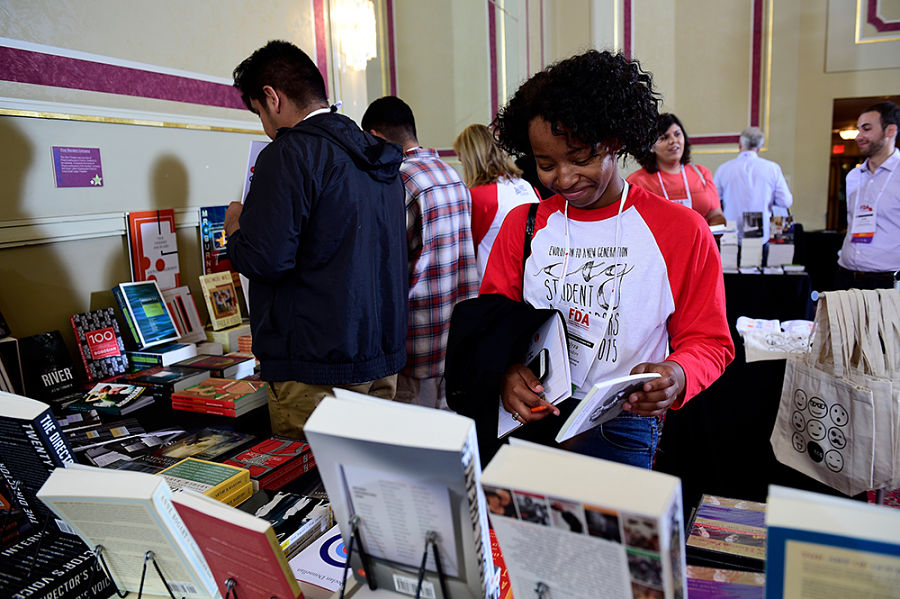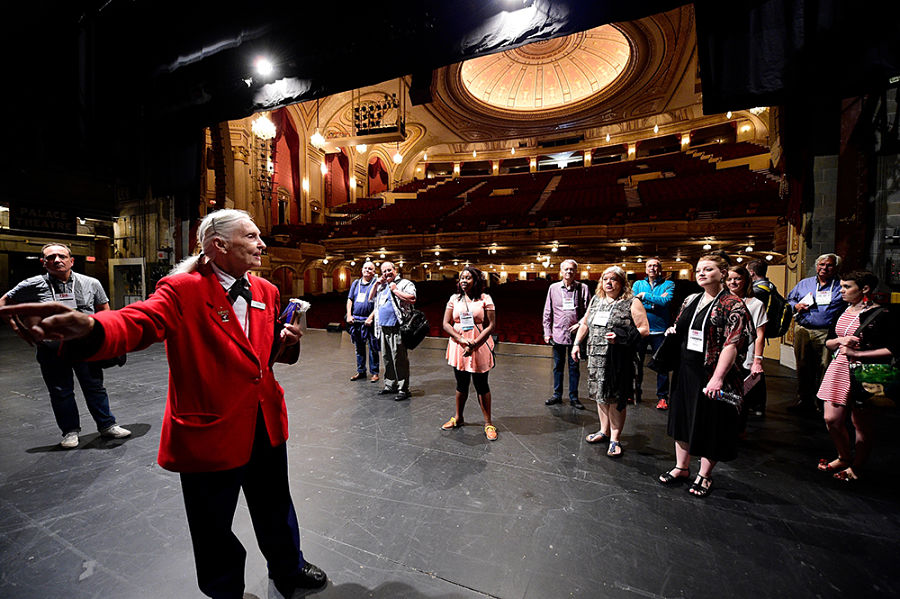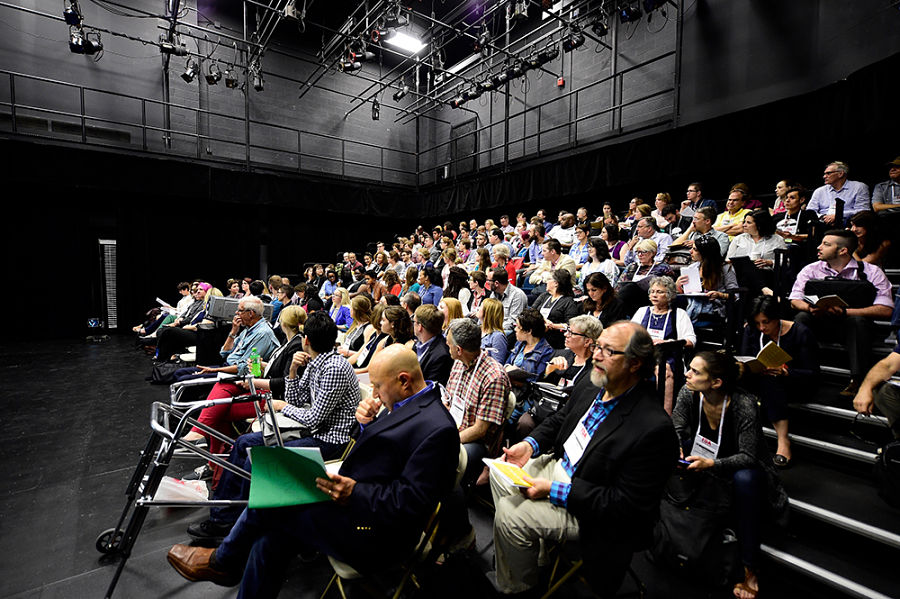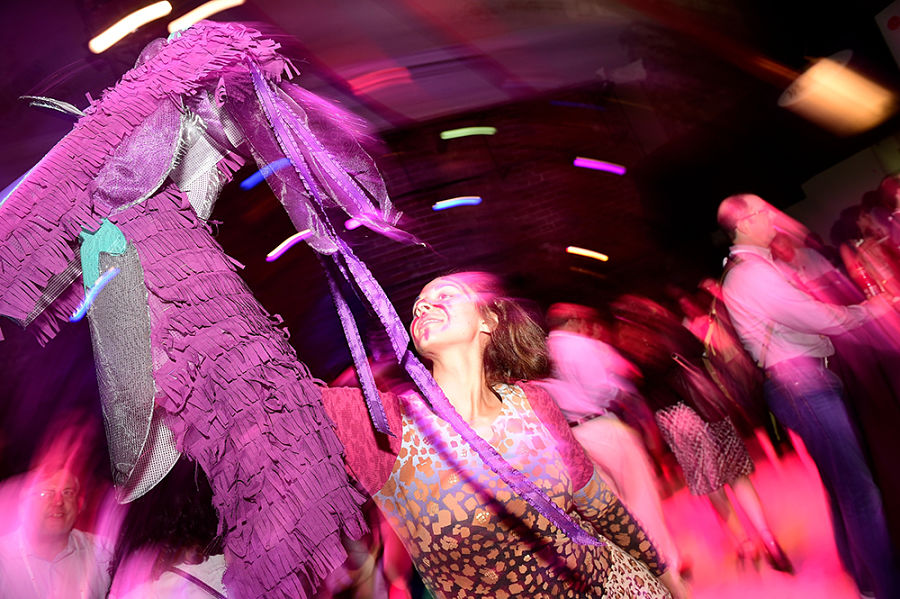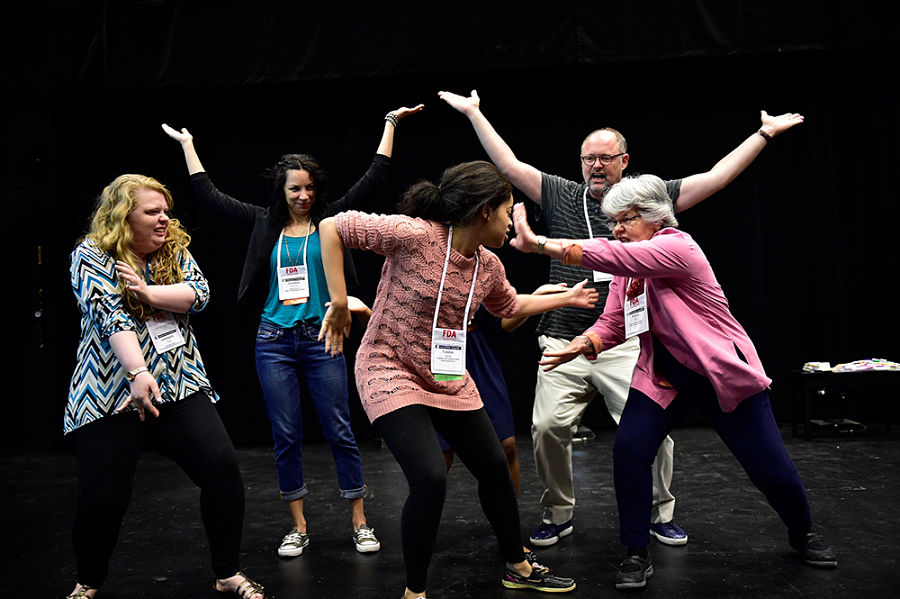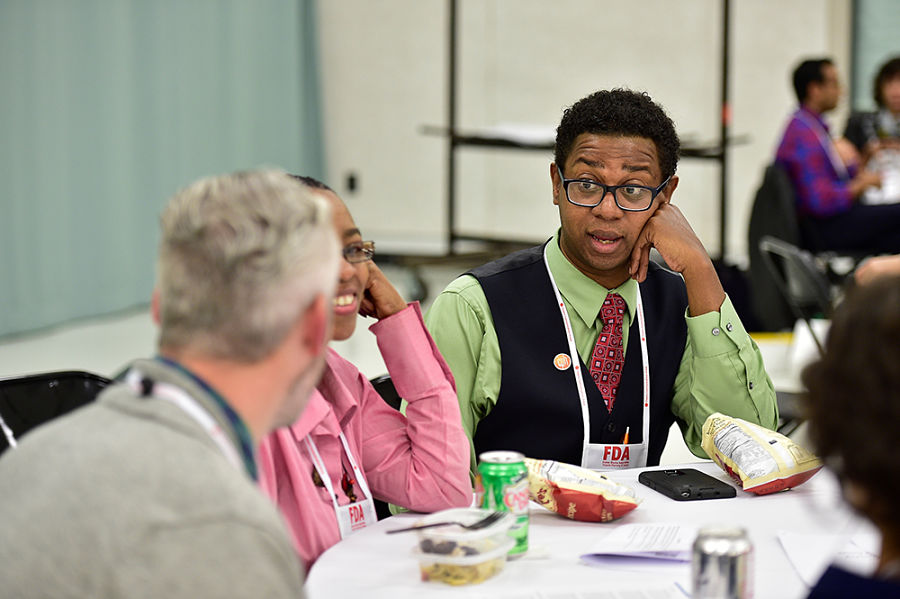“The keys are in the living room.”
Sharifa Johka repeated this mantra as she spoke to a group gathered for “Hiring for Change: Racial/Ethnic Diversity in Production Departments” on the first day of the recent Theatre Communications Group National Conference, which took place in Cleveland June 18—20.
“You have to fundamentally believe that diverse and qualified people exist,” Johka told the room, using the metaphor of searching for a set of keys—and trusting that they are there, despite initial evidence to the contrary. Johka is the program manager for FAIR, a professional development program aimed at achieving equity at the Oregon Shakespeare Festival in Ashland, Ore. Johka’s point: If you know your keys are in the living room, you will stop at nothing to find them there. To her mind, the same is true of searching for candidates for a job. “If your commitment is real and if you believe the keys are in the living room, you see the value in getting those keys.”
The theme of this year’s gathering was “Game Change,” and TCG’s Leading the Charge: Equity, Diversity & Inclusion Initiative (EDI) work was a primary focus. The “Hiring for Change” session fell under a category titled “At the Intersections,” and in these smaller sessions, also called affinity groups, the emphasis was on bringing together individuals by job title, ethnicity, ability, gender, and other commonalities to talk about the challenges and solutions of making real sustainable change along these lines.
To read more coverage of the conference, go here.
“I’m really interested in the people-of-color affinity groups,” said Terrence Spivey, artistic director of Cleveland-based Karamu House, at a pre-conference party on Wednesday night in the lobby of the State Theatre, one of many performance venues in Cleveland’s opulent Playhouse Square, the second largest complex of theatres in the country after New York’s Lincoln Center.
Karamu House is the oldest African-American theatre company in the country, and like Cleveland Play House, is celebrating its 100th season this year. This is Spivey’s first conference, and he said the opportunity to gather in these groups is new to him and to Cleveland. “I just want to see—not in terms of resolution or solving problems—but I want to hear the concerns,” he explained. “How do we get through this using the arts? What better way?”
Messy with Diversity
This is second year TCG has offered affinity space around four areas of identity: disability, gender, race and ethnicity, and sexual orientation. By most accounts, this year went more smoothly than last year, in San Diego, where there was some confusion and fear over the language and the variable range of inclusiveness in these sessions.
“One of the major things that I appreciate so deeply about [TCG executive director] Teresa Eyring and the TCG staff is their transparency and deep reflection,” said Jacqueline E. Lawton, a playwright and dramaturg with PlayMakers Repertory Theatre in Chapel Hill, N.C., who also runs a blog salon on the conference for the TCG Circle. “They’re learning how to do this and how to fail forward. Yes, be afraid! This conversation is going to be messy, and we need to give ourselves permission to be messy. And as long as we understand that the mess is going to get us toward something that is more complex and nuanced, we need to be able to sit in that discomfort, because that’s where you’re learning and you’re growing.”
Lawton pointed to one thing she felt made this year so successful: the opening session on Thursday, “How We Show Up,” which went over the details of how to get the most out of the conference, as well as explaining the nature of the “At the Intersections” groups. Many of the groups were meant exclusively for people from a particular group, it was explained, while others were open to “allies.”
“The tenor of the conference is really shifting,” said Rachel Grossman, a regular conference attendee, and a cofounder and “ring leader” at dog & pony dc. “This is all personal, and we bring our personal selves to our work, so we can no longer ignore personal politics. I really embraced just naming that [at ‘How We Show Up’].”
That group led into a smaller breakout session, also on the State Theatre stage, called “Ally Skills Building,” in which a large group of attendees broke down four of the eight categories TCG focuses on in its EDI Initiative—sexual orientation, gender, ability, and race and ethnicity—and acknowledged who holds the privilege in some of those groups and what the privileges are.
“I’m a black woman, so I can identify any number of ways I don’t hold privilege,” explained Lawton. “But I’m heterosexual and non-disabled, so I can act as an ally and partner in so many different ways.”
Thursday evening’s plenary speaker was humorist and author Baratunde Thurston, who wrote the bestseller How To Be Black, and while he used his comic chops to command the crowd, he drove home an important message about race in America—a topic that was on the minds of attendees after the devastating shooting at Charleston church just the day before. Though Thurston didn’t address the incident directly, he closed his speech with a call to join a change that’s already happening: “I have a strong belief that the distinction between those onstage and offstage, between those who get to choose what goes onstage and what’s onstage, is breaking down. I think it’s very important for us, in the interactive world, whether that’s physically or technologically, to shift that power a little bit to be a lot more inclusive.”
A new emphasis in this year’s EDI Initiative was on disability, and the EDI Institute meeting before the official start of the conference (which was not open to regular conference-goers) brought together facilitators—Claudia Alick, Christine Bruno, and Beth Prevor—to help educate and define terms surrounding disability.
“There’s this fear about disability, not only for theatre,” said Prevor, executive director of Hands On, a service organization dedicated to making arts and cultural events more accessible to the deaf and hard-of-hearing community. “It’s a fear of saying something wrong or not saying the right thing or political correctness. If we can start to have a discussion and take away some of the fear, that’s how it starts.”
One point of discussion Prevor raised was about the conference’s opening night party. On Thursday night, conference attendees were bussed from Playhouse Square to the Cleveland Public Theatre for a party called Pandemonium @ TCG. It was a smaller-scale version of the company’s larger benefit program, with the company’s hisyoric building housing different performance options on all floors, as well as such local food favorites as Happy Dogs, Mitchell’s Ice Cream, and Great Lakes Brewery beer. The entire evening ended with a huge dance party.
Prevor had a good time at the event, she said—but she noted that CPT’s old church building had limited accessibility, and some food and performance options were located up the stairs. She brought it up less to complain than to share the numbing familiarity of such a scenario. “You realize at some point: You’re excluded,” Prevor said. “Nobody made sure everything was accessible all the time. I’m a little older and maybe I’m a little more jaded, but you get to a point where you kind of get used to it.”
But she did note that TCG handled accessibility throughout the conference in other ways. For example, the bookstore was initially set to be located at the top of a set of stairs in the State Theatre lobby, which would have made it less than fully accessible. TCG moved the bookstore to the Ohio Theatre lobby so that everyone could enjoy the lunchtime talks, sessions, and book signings with authors including Paula Vogel.
Just being aware of everyone’s needs and differences can be the first step toward equity. “You’re dangerous to be walking around in the world not knowing where you hold privilege and power,” said Carmen Morgan, director of artEquity at the Oregon Shakespeare Festival, at the Ally Skills Building session. Morgan is also a partner in TCG’s EDI Initiative. “Be clear about your identity and social location as you’re walking through the world.”
New Audiences: Finders, Keepers?
The themes of equity, diversity, and inclusion apply to all areas of theatre, perhaps most particularly to audience engagement and development. Often artistic leaders bring in different kinds of artists to present work on their stages to attract disparate communities to the theatre—and just as often, those audiences don’t come back after that particular show closes.
Attracting and retaining these audiences begins with the art onstage, and that was the focus of Friday morning’s plenary session, in which Public Theater artistic director Oskar Eustis spoke with playwright/performer Lisa Kron, recent Tony winner for the book and lyrics of Fun Home. Kron began her career in the lesbian performance community around the WOW Cafe and as a member of the Five Lesbian Brothers. She also often draws on her own life in her work, in shows like 2.5 Minute Ride and Well, but she doesn’t think her work should be pigeonholed as “lesbian theatre,” any more than she thinks it should be seen simply as autobiography. Kron encouraged artistic leaders to invite a range of artists to create work—and not only about their specific experiences.
“What we really want is people from all backgrounds telling the story of the world,” she said, “and not to assume that story of world gets told by the usual people who’ve always told it.”
Getting more than the usual suspects in the door of your theatre was the topic of a skills-building session earlier that day with TCG’s Audience (R)Evolution team. Funded by the Doris Duke Charitable Foundation, the first round of 10 Aud Rev grants, each totaling $65,000, with an additional 30 percent for general operation support, were distributed in December 2013. The program builds off the success of other audience engagement programs from TCG, including Free Night of Theatre and New Generations: Future Audiences, which ran for more than a decade.
The session addressed five strategies for audience development, and noted the percentage at which they are used by theatres: Relationship (89 percent), which refers to building personal ties within a community; Segment (68 percent), which means expanding the intended audiences served by work; Content (38 percent), which refers to plans to program different work; and Venue/Path (19 percent), which means redefining how people access and engage with the work, and Income (6 percent), which means changing the financial model (ticket prices, etc.).
Grantees who fell under each strategy group shared their work at the session, and then people broke off into smaller clusters to discuss their own experiences. For the Segment discussion, Hallie Gordon, artistic and educational director of Steppenwolf for Young Adults, discussed how the theatre’s strategy for getting young people to TYA-focused programming worked well, and how they used their Aud Rev grant to find a way to merge their subscriber audience with their young adult audience.
Gordon said she found that older audiences would attend TYA programming only if it’s a familiar work, such as The Book Thief, while young audiences don’t come as often to mainstage shows. So Gordon and her team built an event before one of the productions, Rory Kinnear’s The Herd, and asked everyone at the event, young and old, a question related to the play’s themes: If you had one do-over, what would you do? This put everyone in the group on equal footing before seeing the play.
For Seema Sueko, associate artistic director at Pasadena Playhouse, the Segment strategy meant finding ways to engage more actively with the Latino community, which is what the theatre used its grant for. Sueko’s work focused on off-campus engagement strategies, which led to connecting with about 1,000 individuals, 78 percent of whom self-identify as Latino. But the biggest criticism she received from the community was that they wanted to see more Latino-focused work on the theatre’s mainstage. So this fall, Sueko will direct Josefina López’s Real Women Have Curves at the theatre.
Nancy Schaeffer, education director at Dallas Children’s Theater, spoke about how the company used its Aud Rev grant to create more programming targeted at children on the autism spectrum. The theatre only charged $5 a ticket for each performance to make it accessible, and even received additional funding from a local Unitarian church to help subsidize the costs. “You’re going to make some mistakes, and that’s okay,” Schaeffer said. “Don’t let that keep you from doing the work.”
At the same time as the Audience (R)Evolution session on Friday, dog & pony dc’s Grossman and one of her cofounders, Wyckham Avery, led a seminar on audience engagement strategies, particularly centered around her theatre company’s method of interacting with audiences through devised and site-specific work. Grossman said that many theatre companies use the “lift and plop” strategy in their audience engagement attempts, meaning that they look at models from either the education field or the museum world and assume they can simply be imported to the theatre.
Dog & pony dc’s strategy, by contrast, is to diversify the type of programming, the performance location, and the cast performing the show to reach the widest possible audience. “Our work itself is audience-integrated,” Grossman said. “Our work is not for everyone, because it is highly participatory. I would never want to force a style of performance on anyone that is not for everyone. But Shakespeare’s not for everyone! That’s why there’s biodiversity in the arts.”
Friday afternoon’s plenary featured a presentation from Dave Isay, founder and president of StoryCorps, a nationwide project that collects and archives conversations from people of all backgrounds and beliefs. The interviews are broadcast weekly on National Public Radio and preserved at the American Folklife Center at the Library of Congress as part of the world’s largest oral history project.
The stories—from a lifelong love story to the tale of a white mother and her black son’s interaction with the police—had the audience in tears and begging for more. “I do think there is a lot that we share in common—the work that you do and the work we do at StoryCorps,” Isay said to the assembled theatremakers. “I like to think that what we are doing every week on NPR when we do these broadcasts is that we are kind of shaking people on the shoulder with these authentic voices and reminding them that this is what is important—this is why we are alive.”
That night, conference goers had the option of partaking in an array of activities, from joining a Dine Around and testing Cleveland’s cuisines and sites or seeing a show. Some of the options included Cleveland Public Theatre’s production of Christine Howey’s Exact Change, about the author’s identity journey as a transgender individual; David Greenspan’s lecture “What Are Masterpieces And Why Are There So Few of Them”/Identity A Poem: A lecture & playlet by Gertrude Stein, followed by a discussion about Stein’s work; and The Wiz at Karamu House.
Leader Trek: The Next Generation
Another topic at the center of various sessions throughout the conference, including the closing plenary, was succession in theatre companies, and how to find the best people to lead theatre companies to new places without compromising their founding missions.
A two-part session on Friday took a close look at succession planning, featuring executive leaders from two very different companies—American Players Theatre in Spring Green, Wisc., and Chicago’s Steppenwolf Theatre Company—to present case studies of how they went through recent leadership transitions.
For both theatres, considering the company culture was essential to seeking new leadership. APT is an outdoor theatre in a small town with a population of 1,500, and its audiences make a ritual of attending a play there. When the producing artistic director David Frank left, the company decided to transition into a dual-leadership model by hiring Carrie Van Hallgren as managing director and promoting associate artistic director Brenda DeVita to artistic director.
Hallgren grew up near Spring Green, which attracted her to the job, and during her interview process, she made a three-day visit to the company and met every single person who works on the grounds. She also added, as an aside, that she was eight months pregnant when she was in the process, and had an eight-week-old baby when she first stepped into the job.
“We know who we are,” said Nancy Ring, the company’s controller, who has served in the position for 20 years. “We know what we’re looking for. And if we put our minds to it, we’re going to find it.”
From Steppenwolf, former executive director David Hawkanson and new executive director David M. Schmitz talked about their recent transition, which was part of a larger succession that included the artistic leadership, as well. While it’s not stated explicitly in the company’s bylaws, Steppenwolf’s artistic leadership has traditionally come from within its ensemble, and director Anna D. Shapiro had been on deck to take over the artistic director role from Martha Lavey for a while. When it was clear that Shapiro was ready, Hawkanson decided to transition as well, specifically because the company was just starting a huge capital campaign; he thought it would be best if they moved forward with new leadership so he wouldn’t have to step down in the middle of the campaign.
While the board of directors is generally in charge of an executive leadership search, Hawkanson had been grooming Schmitz, who was promoted from managing director, to take over his position for years. So while the board initially pushed back in favor of doing a national search, they compromised, forming a transition committee for Schmitz.
Both men also realized the apparent lack of diversity in their specific transition, but Schmitz said that’s one of his priorities moving forward. “My goal is to use that privilege to make sure the next step isn’t that,” he said, adding that he wants to increase the diversity in the hiring pipeline, as there is a strong culture of internal promotion at Steppenwolf.
Of course, the notion that there aren’t already plenty of qualified leaders from diverse backgrounds who are ready to take on top posts is one that many professionals in the field know to be false. But it is still not widely known enough, and TCG aims to help raise awareness of this reality with its SPARK Leadership program, which supports the professional development of leaders of color whose goal is to lead nonprofit theatres. On Saturday afternoon, conference attendees joined the 10 SPARK Leaders for lunch to talk about diversity and hiring practices. The question presented to each one on the panel was, What does an equitable theatre look like?
Tim Dang, the outgoing producing artistic director of East West Players, spoke about his 51% Preparedness Plan, which challenges theatres to aim for that percentage of artists and/or production personnel being people of color, women, or under the age of 35. “There’s a lot of fear that comes into these leaders’ faces,” Dang conceded. But he was also quick to concede that the challenge is to his own company, as well: While the company’s mission is Asian-American focused work, and most of the staff falls into that demographic, Dang said he only has three women on his board, and he can do other things to increase diversity of his company.
Before the closing plenary session, many conference goers attended a final session called “How We Move Forward,” a follow up to “How We Show Up.” At the gathering, everyone was tasked with thinking of one thing they would take away from the conference that would change their work back home.
At the final plenary, which featured artistic leaders of a variety of theatres at widely different points in their careers, the panelists were asked to share what they would do to implement change in their theatres. The panelists were Gregory Boyd of Alley Theatre in Houston; Laura Kepley of Cleveland Play House; Michael Kahn of Shakespeare Theatre Company in Washington, D.C.; Mina Morita of Crowded Fire Theater in San Francisco; and Niegel Smith of Flea Theater in New York City.
Both Smith and Morita recently took over their companies, and both said that among their primary goals was the creation of urgent work for their communities. “I’m so inspired to consider that I’m not always looking for myself as I create space for the work and for diverse voices, but also looking at those who are coming into our field,” said Morita, adding that it was her first conference.
Laura Kepley, artistic director of the Cleveland Play House, was also a first-time conferencegoer, and although there were many lighthearted digs at Cleveland throughout the three days, Kepley hopes the time spent in Ohio will spur change across the country.
“I think your being here will change the future of our community here in some ways, and we hope that your being here will change your future,” she said.

